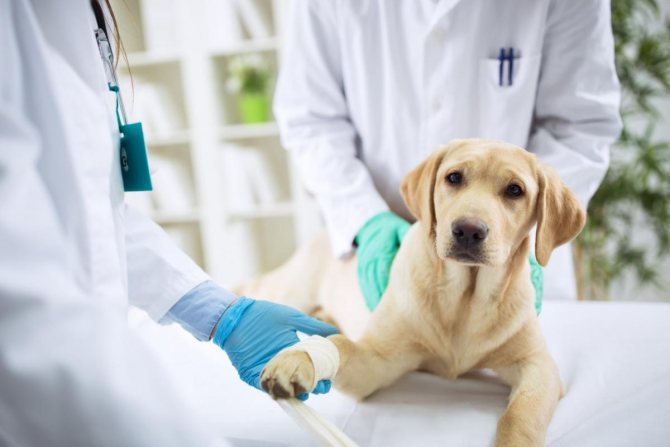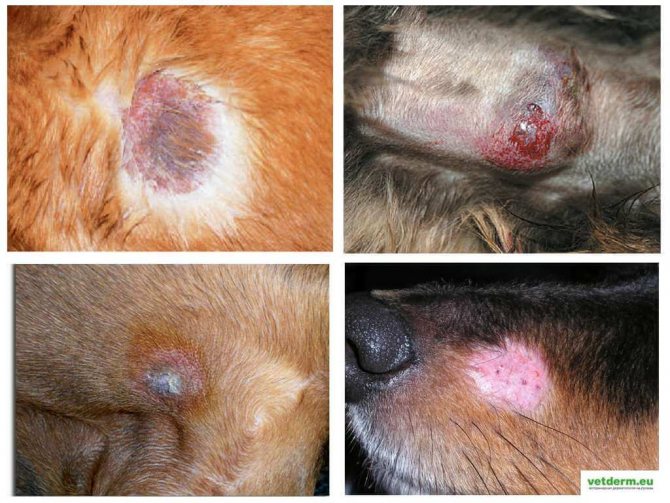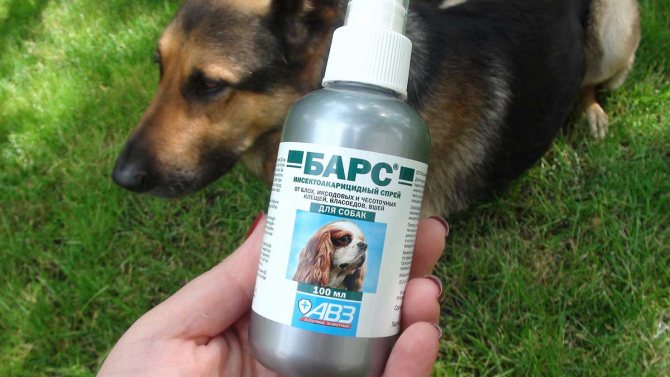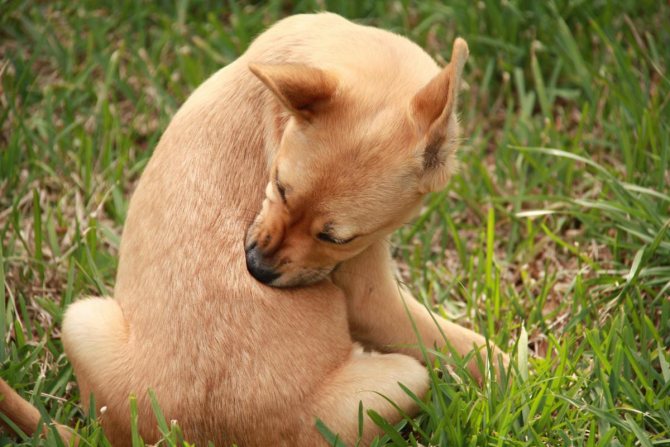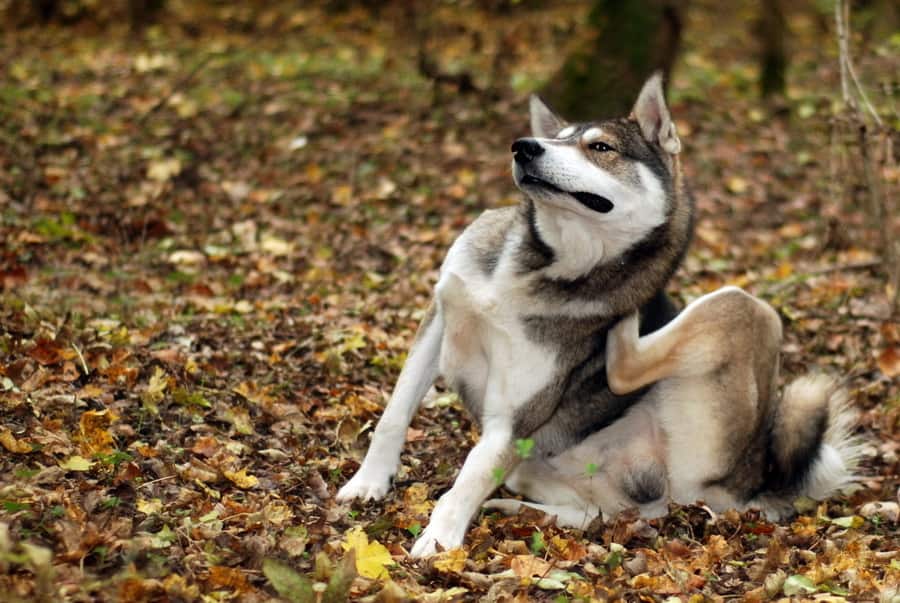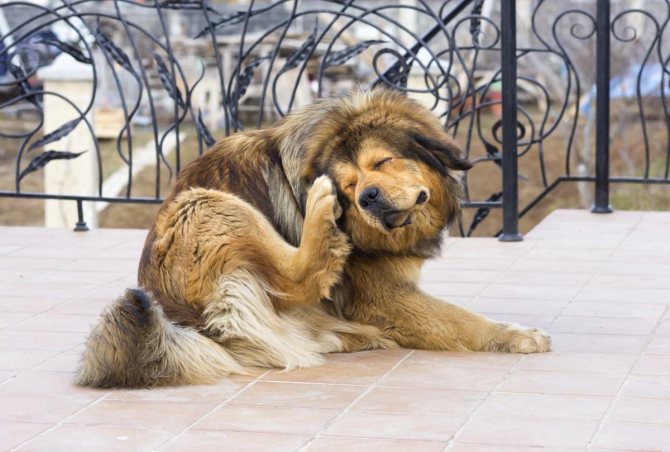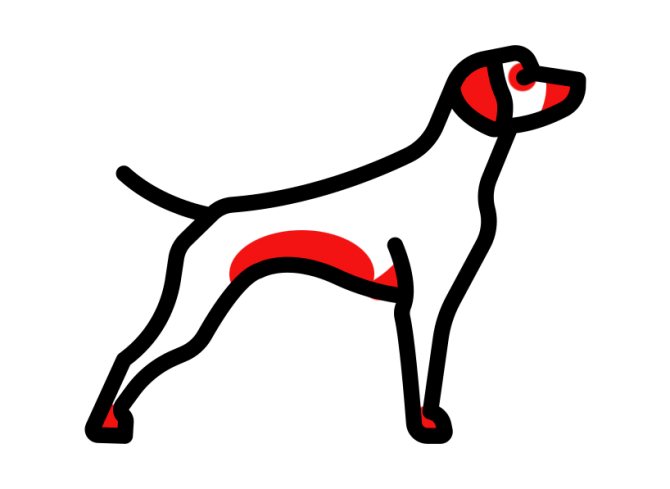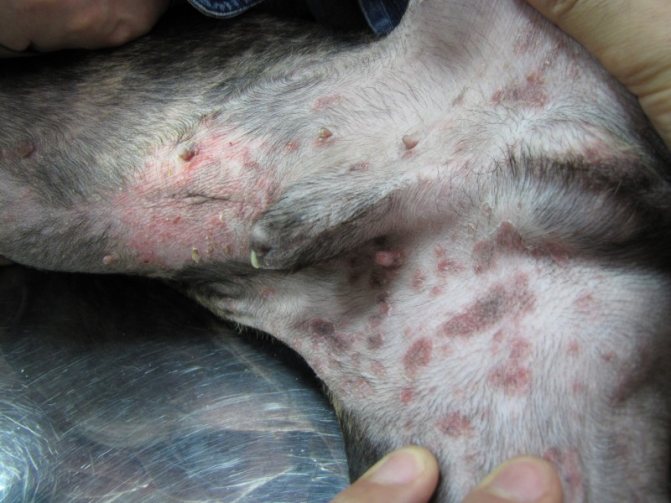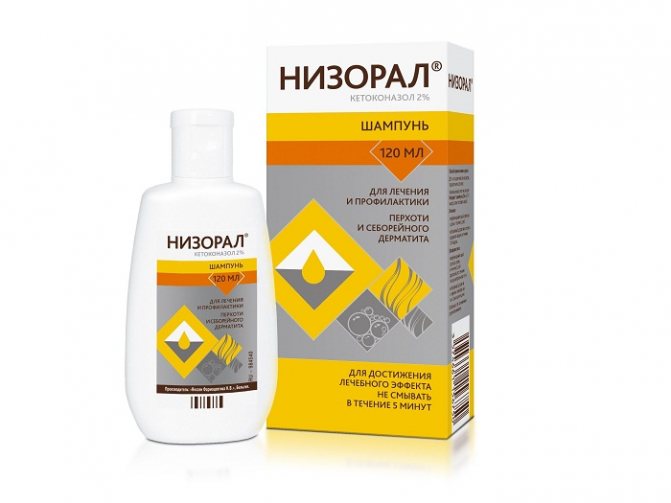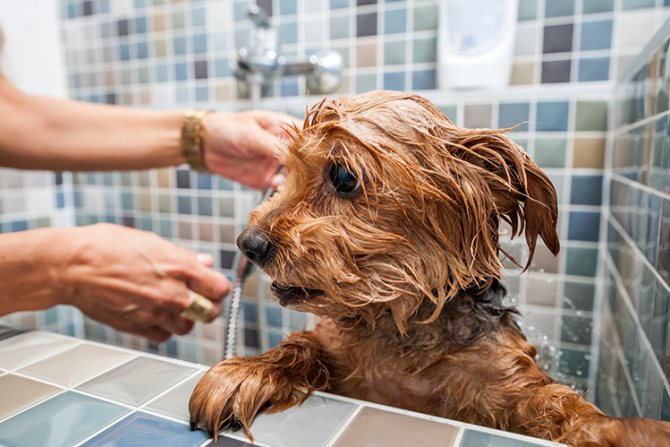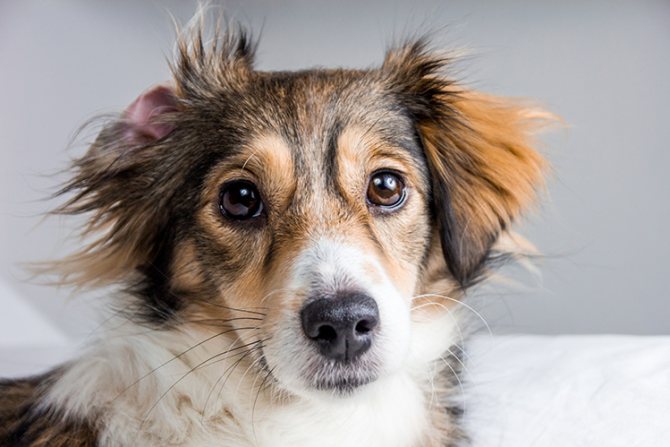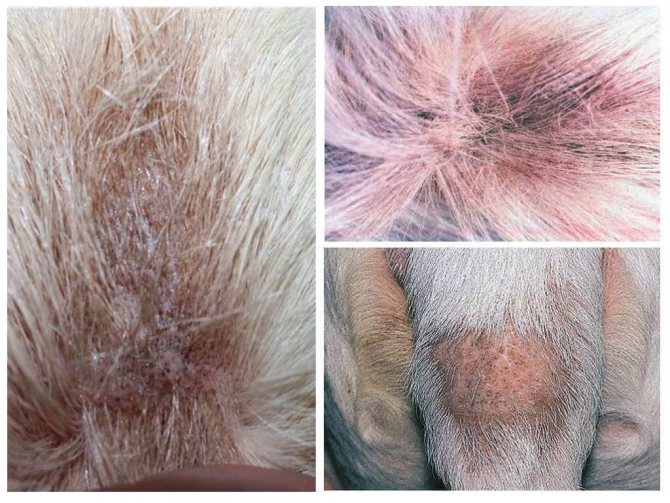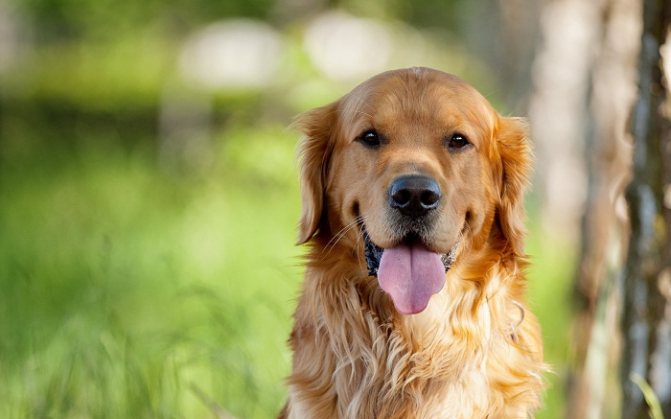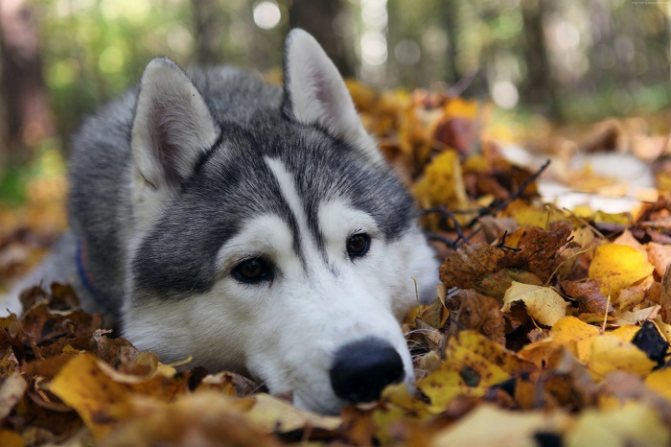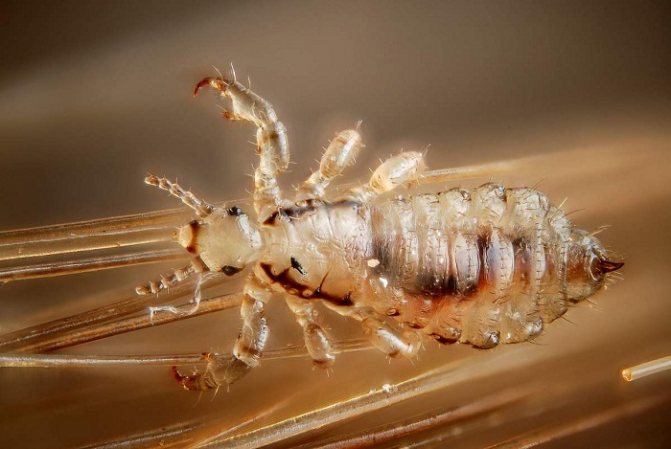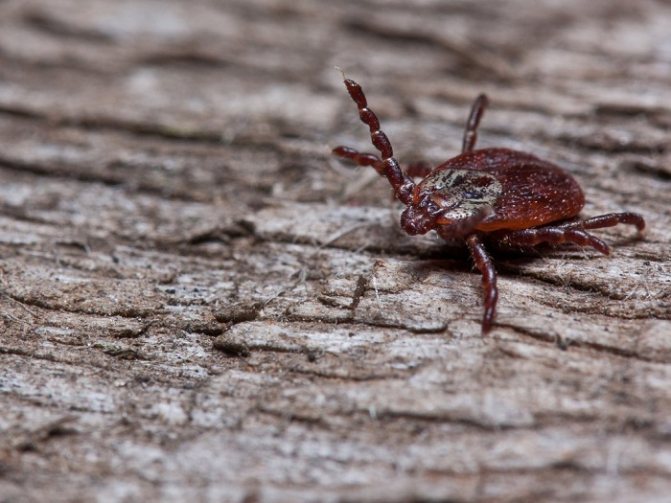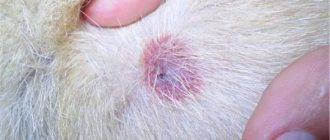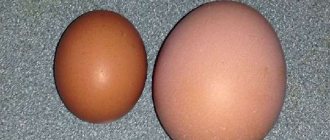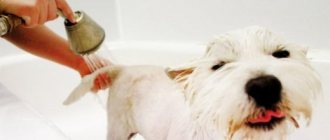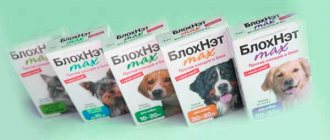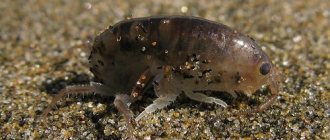If you have a pet, you should know the answer to the question, what to do if the dog is constantly scratching and chewing itself, but there are no fleas? Such a condition in a pet can occur against a background of various factors, including allergic reactions, stress, and dysfunction of the glands. In such situations, it is important for the pet owner to pay attention to this symptom as early as possible and to help the dog.
In most cases, the cause of itching in a dog can be eliminated within a few days without assistance. If it is not possible to do this with home methods, you should contact a veterinarian, undergo a full examination and treatment.
Psychogenic causes (stress, fear)
Surprisingly, for some reason, often psychological reasons, such as stress, overexertion, fear, can be to blame for itchy skin of dogs. Conflicts in the house, moving or the appearance of a new family member are to blame.

The dog itches: is the pet sick
Nature has endowed dogs with a strong psyche, but sometimes it also fails. The dog becomes susceptible and sensitive to external factors. If stress does not pass for a long time, then it begins to manifest itself with various physiological symptoms, including the animal begins to actively comb itself.
Symptoms of stress can include:
- unreasonable barking, whining;
- insomnia;
- winding circles around the apartment / house;
- disobedience;
- lack of appetite or excessive appetite;
- intensive licking of the coat, up to the formation of bald patches;
- tail biting;
- trying to hide;
- shiver.
Important! As a rule, these signs are worse at night.


When stressed, the pet looks for a secluded place.
Too obvious to notice
A very common situation when the owner takes the pet to clinics, takes expensive tests, the veterinarian "fights" in search of the reasons, and as a result, the dog itches even harder only from the stress experienced. Therefore, before contacting the clinic, consider the most harmless causes of itching:
Fleas, lice, ticks are blood-sucking parasites that cause itching and carry infections. Even if the dog is treated for parasites, but at the same time itches and gnaws at itself - carefully examine the coat and undercoat. Hypothetically, there may be only a few fleas or lice, so look for parasite eggs. Any examination is carried out according to the standard algorithm - carefully feel the open skin, examine the ears, abdomen, the area under the collar, folds between the fingers - all the places not protected by the undercoat. Then feel the sides, back and neck.
Attention! If parasites are found, do not postpone and re-treat the animal, without taking into account the time that has passed since the last treatment. Perhaps you got a poor-quality or weak drug Pay special attention to the prevention of ticks, it is they who infect the dog with piroplasmosis - an extremely dangerous blood disease that quickly affects the kidneys and liver of the dog
If you managed to find parasites, roughly speaking, you are lucky, the problem is easily solved and the pet will be completely disinfected within 2-3 days. Why a dog itches if there are no fleas is a more complex question and requires comprehensive consideration.
The first common cause is stress. Remember one of the difficult periods of your life when you went to bed and felt as if ants were running under your skin or the sheet was covered with sand. The head and the whole body began to itch, while hair loss was observed, and the general state of health was far from being a fountain. Dogs react in the same way, only their sensations are stronger. Especially, this concerns choleric people, not steress-resistant decorative pets and dogs employed in the service. If the dog, especially before bedtime, asks to scratch the abdomen or exposed skin, shows signs of general anxiety. The sleep is restless and at the same time the pet's fur is climbing - most likely, the reason is overexcitation on a nervous basis. Provide the animal with peace and abundant food, refuse group walks, in the literal sense - protect from children or new family members. The dog adapts, but it takes time.
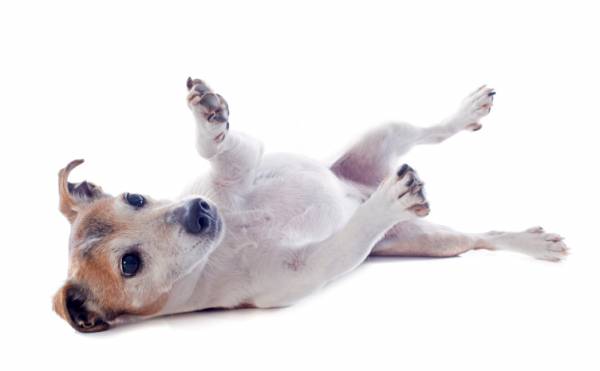

Itching that occurs after washing is guaranteed to be due to poor quality water or detergent. The pet's skin is softer and more susceptible to irritation, so frequent bathing is contraindicated for dogs. If the dog has dandruff and itches on the body, exclude shampoo and bathe your pet with clean water. This will keep the skin's natural lubrication away from damage, but will remove dirt and dust.
Allergies are the most severe root cause disorder. If the dog's paws and muzzle itch, skin reactions, nasal discharge, brittle coat are observed - there is a possibility of allergies. The difficulty is that almost the entire environment contains allergens - food, household chemicals, dust, pollen, natural wool, polymers, metals, building materials, fabrics, waste emissions into the atmosphere. Determining what the pet's body reacts to is quite difficult. In the veterinary clinic, a set of tests is carried out, in case of failure, the substance causing the allergy is determined by exclusion.
It is interesting! The average family living in a three-room apartment independently brings into the house about 120 allergens, including dust on shoes, and old buildings can be allergenic on their own. If you suspect an allergy in your pet, stock up on antihistamines and take action. Gradually, you will find the reason.
Diseases of the internal organs
The cat itches, but there are no fleas, constantly licks
Scabies in a dog can also mean problems with internal organs, such as liver disease, diabetes mellitus, endometritis (inflammation in the uterus), enteritis (inflammation of the gastrointestinal tract), kidney failure.
Associated symptoms:
- tormented by thirst;
- constant licking, in connection with which hair may partially fall out;
- increase in temperature, fever;
- loss of appetite.
To identify possible pathologies, it is necessary to do an ultrasound and X-ray to determine the problem organ.
External parasites
Lice, fleas, ticks are blood-sucking ectoparasites. They cause itching and are carriers of infections. It is worth carefully examining the coat and skin of your dog, make sure that it is the insects that have caused severe scratching, nervousness, and anxiety. Having found ectoparasites, you should not postpone the processing of the animal. After all, insects very often lead to more dangerous diseases, which are much more difficult to treat than just removing ectoparasites. For example, one of them is piroplasmosis, caused by ticks and leading to kidney and liver damage in dogs. Today, veterinary pharmacies offer pet owners a lot of insecticidal agents that perfectly cope with the problem during the day. The animal calms down, insects die, the quality of life of the pet rises. You just need to carefully read the instructions for such drugs, observe the dosage and take into account all contraindications.
Allergic skin reaction in dogs
How to drip flea drops to a cat correctly
Dog itching can be associated with allergic reactions in the body. That is, a foreign element got into the animal's body, which was not accepted. In connection with its rejection, inflammatory processes began to occur with the release of histamine into the blood (a compound that regulates the functions of organs), as a result of which muscle and bronchial spasms, tissue edema, itching, rash, lacrimation, etc. occur. Allergies in dogs are inherited.
Note! The allergic reaction in dogs is much more severe than in humans, and with age it manifests itself in more severe forms. Therefore, attacks of the disease should be slowed down as early as possible.
Sources of allergies can be food, household chemicals and perfumes, medicines or collars from fleas and other parasites, insect bites, etc. Puppies often have a reaction to ectoparasite bites and food.


Pollen allergy is one of the most common
Along with itchy skin, signs of allergies can be:
- swelling and rash on the skin;
- discharge of fluid from the nose and / or eyes;
- inflammation in the auricles;
- redness and dryness of the pads and interdigital area;
- suppuration of the eyes;
- disruption of the gastrointestinal tract (vomiting, diarrhea);
- the appearance of bald spots on the coat.
Only a doctor can diagnose, let alone prescribe remedies for allergies. It can be difficult to establish the disease, for this you have to carry out special tests for groups of allergens.
Itching
If the dog is riding and whining and you have voiced this symptom to the veterinarian, the first presumptive diagnosis is likely to be itching due to a blockage in the anal glands. In the body of your pet there are no extra parts, these very glands secrete "paste for dog mail", in other words, a secret in order to mark the territory. The smell (excuse me) from the priests serves as a beacon for the dog and frames the border of its possessions, in the same way a stranger learns that someone already lives here. The presence of the aroma also explains the poking of (even same-sex) dogs under the tail of their relatives when meeting, but we digress.
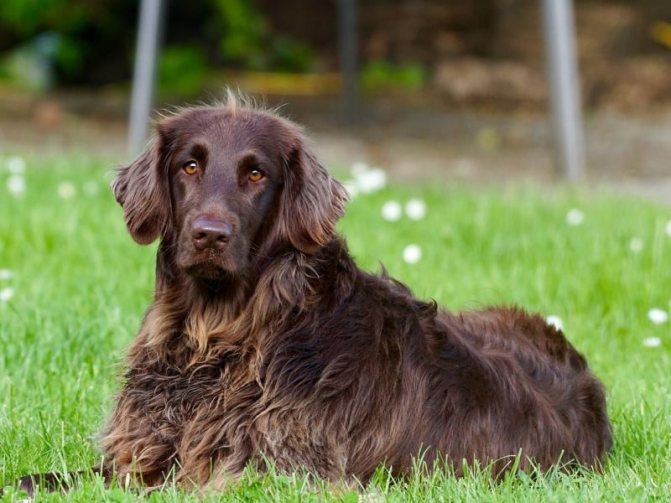

So, a secret is collected in the glands of the pet, which is secreted by the will of the dog and in small quantities. If the four-legged is very frightened, a sharp release of incense can occur, which will be felt by everyone who is nearby. This secret has a certain, semi-liquid consistency.
With improper feeding, stress, metabolic disorders, colds, hypothermia, the development of pathology (and many other reasons), the liquid can change its density. If the secret has become more liquid, the glands begin to work more actively, if it is thicker, the dog is physically unable to empty the sinuses (the tunnel from the gland to the outside). In both cases, sooner or later, a blockage occurs.
The plugs in the outlet openings do not stop the work of the glands, and the secret begins to press on the walls of the sinuses. In this case, the dog feels physical pressure in the anus and severe itching. Since the tailed ones cannot scratch in the causal place with their paws, they sit on the floor, raise their hind legs and row with their front legs. The effect is obvious - the pleasure of eliminating itching, everything would be fine if this measure was not temporary.
Note! Many pocket dogs are prone to blockage of the paraanal sinuses. ... Treatment of this problem does not require complex manipulations, since the process is stopped by elementary cleaning.
The veterinarian physically squeezes the plugs out of the sinuses, but the action of the treatment "stretches" exactly until the sinuses become clogged again. The best option is to search for reasons, but as mentioned above, there are a lot of options.
Treatment of this problem does not require complex manipulations, since the process is stopped by elementary cleaning.The veterinarian physically squeezes the plugs out of the sinuses, but the action of the treatment "stretches" exactly until the sinuses become clogged again. The best option is to search for reasons, but as mentioned above, there are a lot of options.
Even if you eliminate all the risks, there is a possibility that your pet is prone to blockage of the glands, this happens, especially with small dogs. A more realistic perspective is regular sinus cleansing. The procedure is performed once every 3-4 months, but if the channels are clogged more often, this is clearly not a tendency, but a symptom.
What happens if the problem of blocked sinuses is ignored? At first, the dog will ride on the pope, but sooner or later, it will damage delicate tissues and harmful microflora will get into scratches. Bacteria are actively dividing because the warm, humid atmosphere and abundance of food leave them no choice.
The dog develops paraproctitis - inflammation of the anal sinuses with all the attendant circumstances. Itching turns into pain and then, depending on the neglect of the situation, purulent inflammation, constipation, etc. may occur. If the infection goes "higher", the consequences are unpredictable, up to and including peritonitis. The conclusion is obvious, if the dog started a "flat slalom" on the priest, it is better to play it safe and check the condition of the "vehicle".
Atopic dermatitis
Dermatitis (AD) is one of the manifestations of an allergic reaction of the body that affects the skin. Bald patches appear on the body, on which bumps develop with fluid filled. Suppuration is possible, due to which an unpleasant odor emanates from the wound. The affected area is a great place for infections and fungal diseases. A special sign of blood pressure is considered to be a black spot on the affected area of the skin.
Flea shampoo for cats and kittens: which is better
Provoking allergens: pollen, dust, household chemicals, parasites, some components of dog food.
Important! All treatment for blood pressure is carried out under the supervision of a veterinarian. They are also prescribed drugs and hypoallergenic diets.
Prophylaxis
Prevention is better than cure morally and materially. I will tell you what you need to do to minimize the risk of the disease. The following conditions must be met:
- Ensure that the conditions of detention are consistent with sanitary standards. The optimum air temperature is 15-16 ° C, humidity is from 40 to 70%.
- Natural food is better than ready-made food, provided that the diet is balanced in nutrients and energy. In practice, this is difficult to accomplish. Recipes from the internet will not work because the actual nutritional value of the ingredients may differ from the recipe. therefore use prefabricated feed... If your dog has food allergies, you can always have the right food.
- Quarterly deworm.
- Avoid bathing your pet with detergents.
- In hot weather, use cooling mats, kerchiefs, and blankets.
- In the presence of a dog, do not smoke, do not use perfumes, prevent pet contacts with household chemicals.
Sebaceous gland hyperfunction
Overactive sebaceous glands (sebaceous tail) contribute to the spread of itching in the animal. The prerequisites for this may be the lack of regular care for the skin and hair of the pet, as well as keeping it in poor conditions. An important role is played by malnutrition, lack of vitamins, decreased immunity, the presence of any skin diseases.
Itching begins in the anus and near the base of the tail. Increased function is manifested in the form of black dots, redness, induration. In more advanced forms, seborrhea appears. Feeling irritated, the dog carefully licks the affected area and even gnaws at the tail. The animal's coat begins to suffer from clumping and shedding.
Ectoparasites


Ectoparasite infestation can be the cause of itching in a dog.In this case, the clinical manifestations are both obvious and latent, manifesting only some time after the parasites get under the skin. The following types of diseases caused by external parasitic organisms can be distinguished:
- cheiletiellosis;
- thrombiculidosis;
- demodicosis;
- ixodidosis;
- lice, lice;
- ear scabies.
Heiletiellosis or wandering dandruff is less common than other diseases of parasitic etiology. Caused by mites heiletiella. When infected, the animal experiences itching in the neck and along the back. In these places, severe redness occurs, the skin peels off, pustules and papules form, which, due to scratching, become covered with black crusts. Due to a violation of the integrity of the skin, purulent and pathogenic fungal microflora enters, eczema and various dermatitis develop. If untreated, the disease can be fatal.
Demodectic mange is caused by ticks, with proper treatment, the disease goes away in 6-8 weeks. But, in the case of its transition to a generalized form, it poses a serious threat to life. Diagnosis includes microsporia of deep skin scrapings. Hair microsporia can also be informative. Examination and analysis of scrapings are carried out monthly, if there is no response to treatment, it is necessary to change the therapy.


Otodectosis or ear scabies can also be the reason why your dog itches all the time. The disease is caused by ticks that feed on epithelial debris and tissue fluids. Scabs in the ears and other parts of the animal's body can be a sign of the presence of parasites. For treatment, drugs of systemic and local action are used.
Thromboculidosis is a sporadic disease caused by the larvae of red bovine ticks. Parasites are located on the dog's body in close groups, mainly on the head, paws, around the tail, on the stomach. In these places, the skin swells, turns red, papules and vesicles appear. The animal is experiencing severe itching. If a dog has an itchy back near the tail, it may for no reason or no reason chase after it. Anxiety appears, sometimes aggression.
Ixodidosis or tick-borne toxicosis is caused by ixodid ticks. The disease occurs in both dogs and cats. Parasites attach to the delicate skin in the ears, neck, abdomen, and inner thighs. It is easy to detect ticks - by pushing the fur apart, you can see them adhering to the skin.
The lice-eaters are inactive parasites that are difficult to notice in the coat. They are small in size and pale yellow in color, feed on particles of the epidermis, secretions from scratches. The female parasite lays eggs and attaches them to the dog's skin, the larvae hatch very quickly and turn into adults, expanding the affected area. It is possible to suspect the presence of lice if bald areas appear on the body of the animal, the coat has become dull, in places tousled, small light grains are found that can be confused with dandruff. And, of course, the main symptom is severe itching. Vlase-eaters provoke allergic dermatitis, the skin at the site of scratching becomes covered with scabs, local immunity decreases, the dog is susceptible to bacterial infections. Treatment must be started urgently. Hair beetles not only can lead to complete baldness of the pet. They can become a source of infection with helminths - cucumber tapeworm. Therefore, therapy includes the use of drugs against external and internal parasites.
Endocrine Disorders: Cushing's Syndrome
Cushing's syndrome (hyperadrenocorticism) is one of the most dangerous endocrine diseases in a pet. The essence of the disease is in the increased content of the hormone cortisol in the blood. It is produced by the adrenal glands, and if there is too much of this hormone in the body, then the work of the pituitary gland is inhibited.


Cushing's disease is characterized by sagging abdomen
The causes of the disease can be frequent stress and the use of hormonal drugs.The most susceptible to hyperadrenocorticism are such breeds as Dachshund, Labrador, York, Retriever, Spitz, German Shepherd, Chihuahua, Pekingese.
Important! At risk are dogs over 7 years of age.
Symptoms of diseases:
- baldness of the sides and abdomen;
- thirst;
- frequent urination, diarrhea and vomiting;
- sudden weight loss or gain;
- poor sleep;
- atrophy of the muscles of the abdominal cavity (sagging of the abdomen and sides);
- apathy;
- the appearance of lameness;
- the manifestation of aggression is possible.
And even despite such a number of signs, only a specialist can make the final diagnosis. For this, a number of studies are carried out: blood and urine analysis, ultrasound of the adrenal glands, MRI of the brain, functional tests of the adrenal glands.
Important! A timely visit to the veterinarian and treatment started on time means prolonging the life of the pet by at least 3-4 years.
Treatment of itching of various etiologies
Comprehensive treatment is prescribed only after the veterinarian has made an accurate diagnosis, its features and specificity depend on the existing disease, since itching itself is usually only one of the symptoms.
Depending on its causes, the following treatments can be applied:


- In case of increased irritability and sensitivity of the skin, it is necessary to normalize the dog's nutrition.
The diet should be balanced and contain a significant amount of vitamins and minerals; it is recommended to completely exclude fatty foods and spices. Ointments prescribed by a veterinarian are also used, and an alcohol solution of tar is used, which is prepared in proportions of 1:10. During treatment, water procedures with soothing soap are required at least once a week, as well as a temporary exclusion of meat from the diet. - If the itching was caused by a wet variety of lichen, then drugs such as Sulfur and Mercurius are used for treatment. They must be used in accordance with the instructions that are attached to these funds, both their intake and external treatment of the affected areas are allowed. As additional measures, dressings with medicated ointments and water treatments with creoline soap are used. To speed up the treatment process, it is necessary to temporarily completely exclude meat products and potatoes from the diet.
- For pruritus pruritus, isolation of the dog from other animals is required, as the disease is highly contagious and there is a high risk of infecting other pets. The animal must be bathed and washed as often as possible with ordinary soothing soap, before going to bed, treat the affected areas with linseed oil. Phosphorus 3 or Dulcamara 3 is added to food, the daily dosage is no more than five drops.
- Scabies and scab are extremely unpleasant diseases that progress very quickly, the itching with them is so strong that soon bald spots appear on the animal's body from frequent scratching. The disease is extremely contagious, therefore, mandatory isolation of the dog from all healthy pets is required. At the time of treatment, a change in diet is necessary, all food should be light, but at the same time differ in nutritional value, oatmeal is well suited. Every other day, water procedures with creolin soap are required, in addition they are treated with the affected areas on the dog's body. Treatment with linseed oil is also permissible, this will soften the existing scabs, which will speed up the healing process. Sulfur 3 or Mercurius 3 is added to food, the dosage is determined in accordance with the instructions.
- In the presence of food allergies, there are a number of difficulties, since even with the help of tests it is extremely difficult to determine what exactly caused it. It is necessary to constantly change the dog's diet, identifying allergens by elimination, on the basis of which preventive diets are built.If the allergy is caused by non-food factors, but in the overwhelming majority of cases it is chronic and cannot be cured. In such a situation, the veterinarian prescribes drugs and determines the characteristics of the conditions of detention in order to improve the condition of the dog and relieve it of the incessant itching.
Parasitic skin diseases
Quite often, parasite infestation is a problem with itchy skin in dogs. Fleas, ticks, lice, lice, worms - these blood-sucking insects simply harass pets if treatment is not carried out in a timely manner.
Fleas
They are carriers of diseases such as helminthiasis, endocarditis and rickettsiosis, which expose the dog's body to intoxication. In addition, human infection from an animal is possible.
Lice
These are pale yellow small flea-like insects. They cause inflammation of the skin, deterioration of the skin and, as a result, itching and insomnia.
Mites
Ticks are carriers of deadly infectious diseases (piroplasmosis, bartonellosis, etc.). When infected, the dog can bite itself, to the point that the coat begins to crumble. Also, ticks love to penetrate the ears, and therefore the animal often shakes its head, the skin on the ears becomes rough. It is important to check the dog's coat thoroughly after walking.


Finding ticks after a walk
Vlasoed
This small, whitish parasite with a quadrangular head causes itching by feeding on particles of skin and hair. Over time, the affected areas can become bald. The lice are localized, as a rule, on the ears, abdomen, back, at the base of the tail. They are carriers of infections and worms. You can get infected from a sick animal or through the fault of a person who brought parasite eggs on shoes.
Important! The disease can be passed on to puppies from the mother.
Worms
Both young puppies and fully adult dogs can become infected with worms. Signs of infection, along with itching, include:
- apathy followed by anxiety;
- no appetite, or, conversely, a sharp increase in it;
- disruption of the digestive tract;
- detection of worms in the feces and blood of the animal.
You cannot completely rid your pet of these parasites. However, it is quite possible to make you feel better.
Other types of diseases caused by ticks
Separately, I would like to say about such diseases as thrombiculosis, demodicosis, itch itching. They are caused by infestation with special types of ticks.
Thrombiculosis, as a rule, occurs in the warm season. It is characterized by the fact that the mite larvae parasitize on domestic animals for 2-3 days, and then, after drinking blood, they disappear and continue to progress in the soil. They cling, as a rule, to the neck, mouth, limbs, abdomen and near the anus. At the site of their suction, redness and swelling are formed, which cause itching in the animal.
For your information! With demodectic mange, mites settle in the coat or sebaceous and sweat glands of the animal. They gnaw through the hair follicle and eat away the epithelial cells, which causes itching and hair loss.
Scabies itch (scabies mite) are aggressive external parasites. They cause intoxication of the body. The pet can not only comb itself completely, but its state of health generally worsens. Associated signs: nervousness, loss of appetite, hair loss, crusting on the skin. Itching is preferred by low-hair integuments.
If you do not contact the veterinarian in a timely manner and do not start treatment, then infection with parasites will greatly reduce the immunity of the pet, and also provoke the development of other diseases, up to the defeat and failure of the internal organs.
Why does a dog itch if there are no fleas?
Itching in pets can develop against a background of various factors. These include allergic reactions, ectoparasites, skin diseases, as well as the consequences of stress, lack of vitamins. In all the cases presented, the skin of pets itches a lot, this condition can be accompanied by the formation of wounds, the appearance of bald patches, and a rash.
In some pathologies, itching is accompanied by severe pain. If the owners notice that the puppy whines, has lost appetite, constantly bites itself even after the next treatment for fleas, they need to take him for an unscheduled examination. Until they identify the cause of these symptoms and complete treatment of the animal, the signs of the disease will not disappear.
Ectoparasites
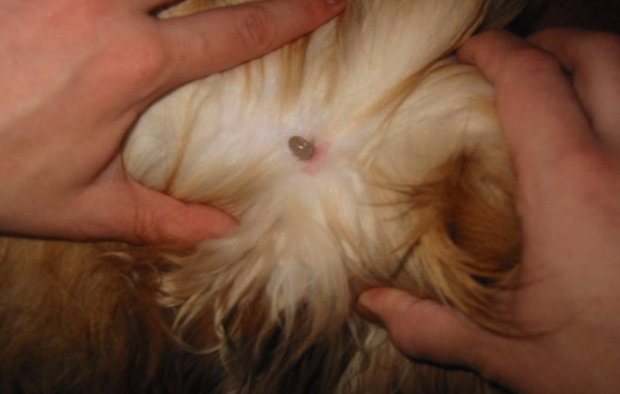

Fleas are not the only parasites that can annoy our pets. In addition to them, dogs can also start:
- Subcutaneous mites. They consume horny skin scales. They provoke demodicosis, lay their eggs in the hair follicles. Individuals with low immunity are more often affected. They can provoke not only severe itching, but also baldness.
- Lice. They feed on the blood of an animal, lay eggs in the pet's fur. Their presence is indicated by bloody wounds near the ears and neck of the pet.
- Ixodid ticks. Borreliosis, encephalitis are transferred. They can attack the animal while walking in parks and squares, more often they affect the neck, the area behind the ears. Ixodid tick bites cause severe allergic reactions.
- Vlasoedy. They feed on skin scales. They provoke hair loss and the appearance of a rash on the skin. They settle mainly along the spinal column, on the head.
- Gamaz parasites. Attack the dog's torso. They are rare, since cats and rodents are more often chosen as victims.
- Scabies arachnids. They make painful bites that can cause severe stress in the pet, muscle spasm.
- Mosquitoes and mosquitoes. These insects bite dogs mainly at night. In some breeds, there is a strong allergy to their saliva, which leads to itching and severe swelling.
To identify parasites, it is necessary to examine the pet's skin and coat. If you notice a rash, small insects, small scales that sit tightly on the coat, contact your veterinarian. There is a high probability of infection with fleas, lice, and ticks.
It is impossible to remove parasites without the help of specialists. To alleviate the condition of a pet that itches all the time, you should do this:
- Treat it with a special antiparasitic shampoo or spray (Bars, Frontline).
- Wash your dog's favorite toys, replace the pet's bowl with a new one. Carry out the processing of upholstered furniture, carpet, curtains with special means.
- Buy a flea collar, put it on your pet. It can be used not only for treatment, but also as a preventive measure so that the dog does not pick up parasites from other animals on the street or on a visit.
Don't count on getting rid of the ectoparasites in one go. Their eggs may remain in the house, from which a new generation of insects will hatch. To destroy them all, be sure to re-process both your pet and housing every two weeks. Use proven drugs for this purpose and follow all the veterinarian's recommendations on this matter.
Allergy
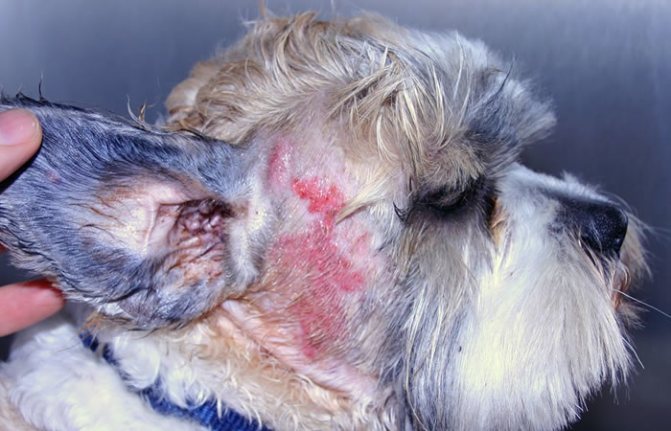

Itching can occur in dogs as a result of an atypical immune response to a substance. In case of allergic reactions to an irritant, this symptom will be accompanied by sneezing, swelling of the mucous membranes, "fluttering", indicating a dry throat in the pet. In some cases, the puppy may experience hair loss, rash, and fever.
The following allergens can provoke an abnormal reaction of the body:
- Chemical elements. Air fresheners, materials from which the bowl is made, animal bedding, medicines. It is worth paying attention to this factor if the dog's face or paws itch badly after the drops. It is possible that the selected medication does not suit her.
- Food allergens. Colorants, taste stabilizers, individual products. An abnormal reaction of the body can be caused by beef, horse meat, milk.Sometimes it can manifest itself on the food that the pet previously ate with pleasure.
- Bites of parasites - fleas, ticks.
The appearance of an allergy to a certain substance can be suspected if the pet's skin itches, but there is no dandruff. The breeder should remember that this pathology is practically not treated by modern methods of veterinary medicine. He should take care of the special conditions of keeping his animal so that it can feel comfortable in the future.
Skin diseases
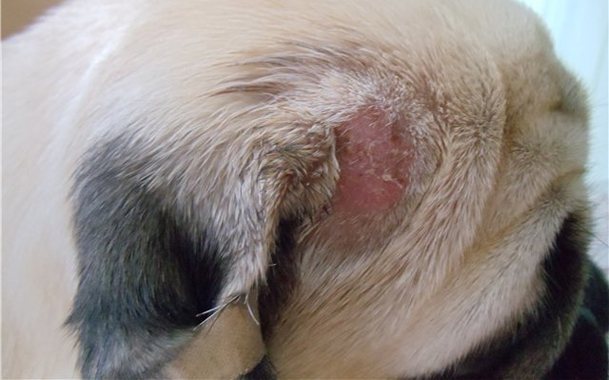

Itching in a pet can be triggered by dermatological pathologies. These include:
- Lichen. This is a disease of a fungal nature, in which the pet develops a round bald patch, and small bubbles with colorless greed appear on the skin along its perimeter, which burst and spread the infection to neighboring tissues. A dog of any breed can become infected with shingles, including Chihuahuas, shepherd dogs, Labradors. The infection can be transmitted to a pet from a cat or any other animal. Sometimes spores of the fungus get on the skin of a pet from a person's clothes, they provoke this disease if they settle on wounds or rubbing from the collar.
- Trichophytosis. Symptoms of this disease are similar to ringworm. However, this fungal infection affects not only the skin, but also deeper tissues, which is why the dog has wet wounds on the body, from which pus and ichor are released. Requires long-term systemic treatment.
- Dermatitis of inflammatory etiology. Found in pugs, chow-chow. It manifests itself in the form of redness and increased moisture in the folds of the skin.
Less common in dogs is eczema, scab, atopic dermatitis (it has a hereditary breed). Animals with such diseases are prescribed antimycotic local and general drugs. It is recommended to isolate them from people and animals during treatment. If the pet's condition is assessed as severe, antibiotic therapy may be prescribed.
Disruption of the sebaceous glands


This pathology is rare. It develops against the background of a change in the consistency of the secretory fluid or feces. Because of this, there is a blockage of the sebaceous glands located near the anus of the dog. A number of symptoms indicate the development of such an ailment: the appearance of itching, dark spots on the affected area of the skin, small bald patches around the tail.
The manifestations of the disease include oily seborrhea and sticking wool. A pet suffering from such a pathology gnaws its tail, rides on the priest, licks its butt.If he does this regularly, he will develop baldness on the affected area of the body.
At home, this problem cannot be completely eliminated. To alleviate the condition of the animal, you need to use specialized shampoos that regulate the function of the glands.
Stress


Constant mental and physical stress can also cause scabies in a dog, even if it does not have ticks. The following factors can provoke the development of pathology:
- improperly organized games with a pet;
- family conflicts witnessed by the animal;
- fright caused by loud sounds, sudden movements.
In some cases, scabies in a dog appeared after visiting a veterinarian. It could be triggered by an unpleasant smell of drugs or procedures that are uncomfortable for the pet.
Itching caused by stress usually goes away in the dog after the irritation is removed. If the symptom is observed in the animal for a long time, it is prescribed to take sedatives, regular games in the fresh air. For a quick recovery, the beast needs to get positive emotions.
Decreased immunity and lack of vitamins
If the dog is constantly scratching and gnawing itself, there are no fleas at the same time, then one can simply suspect a decrease in immunity and a deficiency of vitamins in the pet's body. The reasons for this can be:
- poor conditions of detention (lack of light, heat, fresh air, washing or bathing);
- unbalanced diet;
- insufficient physical activity;
- taking medicines;
- pregnancy of the dog;
- infectious and viral diseases;
- trauma;
- surgical intervention.
Any dog, whether it is a puppy or an already quite adult animal, needs vitamins and microelements. They can be obtained from food in vegetables, herbs, as well as in special vitamin complexes for pets.
Contact with irritants
Indoor dogs are regularly treated with insecticides, because ectoparasites pester not only pets. The animal does not have fleas, but it itches constantly. It is necessary to analyze what physical or chemical irritants can cause itching.
In winter, the decorative dog lives near heating radiators. The skin dries up, cracks. Skin defects are inseminated by the microflora that constantly lives on the dog, dermatitis develops. Apply aerosol antiseptics, move the dog den away from the battery.
Excessive care of the pet leads to the opposite result. Bathing with poor quality detergent dries the skin and causes pruritis. If you often bathe your pet with a good shampoo, it also develops itchy dermatitis. The protective fat layer is washed off from the surface of the skin, as well as the hairs. The hairs break, the skin dries up. Dogs should not be bathed unless they are very dirty.
Most situations do not require medication. Recovery occurs after elimination of the causes.
Ringworm
This is a fungal skin disease. They can be infected from contact with the carrier and when using household items (when combing, cutting, etc.).


Deprive a four-legged friend
The characteristic features are:
- itching;
- red skin;
- loss of hair and the formation of bald spots;
- crusts on the affected areas.
The main localization of lichen is in the area of the ears, muzzle, head, and forelimbs. Later, it spreads to all parts of the body.
After detecting signs of illness, you should immediately contact your veterinarian. The use of any means alone may not provide accurate information about the infection or complicate treatment.
Infection
Infectious diseases are rarely the main cause of itchy dermatitis. Conditionally pathogenic fungi and bacteria always live on the skin of dogs, but they are activated only when the immune defense fails. The main reasons are unsanitary conditions, unbalanced feeding.
Intradermal mites gnaw through the passages, destroy the capillaries. The ichor appears - an ideal breeding ground for microbes. The uncontrolled use of antibiotics destroys bacteria - the main competitors of microscopic fungi. How to resist bacterial infections, we have discussed above. But, what if the fungi are activated?
Most often, infectious diseases of mycotic etiology are called ringworm. An accurate diagnosis is carried out in the clinic. If the pathological focus occupies a limited area, ointments are used - Yam, Clotrimazole or Mycozon. Aerosols are considered more convenient means - Exoderil or Fungin.
In case of large-scale lesions, the dog is bathed in a solution of Fucoricin or Imaverol. In a difficult situation, take Griseofulvin tablets.
On the subject: a dog has red spots on its belly.
Hormonal problems
It happens that the dog itches a lot, but its skin is clean and there are no fleas. This may be due to a hormonal imbalance that causes dermatosis and baldness.
The reasons:
- metabolic disease;
- false pregnancy;
- cysts or inflammation of the ovaries in bitches;
- cryptorchidism in males.


The doctor will help to cope with the disease
This problem is most typical for boxer and dachshund dogs.
Symptoms accompanying itching:
- urinary incontinence;
- inflammation of the outer ear;
- thin and dry coat;
- seborrhea;
- darkening on the skin;
- acne eruptions.
For hormonal diseases, castration or sterilization is considered the most effective treatment.
What the itch is talking about
Itching indicates an increased irritability of the nerve endings of the skin. It is useless to treat these symptoms; it is necessary to identify the causes of the chemical reactions that cause irritation. If your dog is constantly itching a lot, this should not be ignored as itching can be a symptom. In the simplest case, the dog scratches the skin and the scratches become infected.
The reasons can be divided into three large groups:
- Parasites, after all, fleas are not the only neighbors that can pester a dog.
- Various diseases - this list, unfortunately, is very long, but the situation is a little simpler, since there are other symptoms (besides itching).
- - the most difficult reason to determine, since it is possible to determine that a dog itches on nervous soil only after excluding all possible ailments and parasites.
What happens if the itching is not eliminated? Let's look at an example - a dog constantly scratches its sides with its hind legs. The skin on the sides is quite dense and protected by wool, so at first nothing serious will happen. From constant physical impact, the wool will begin to break and fall out. Superficially injured skin will begin to peel off, that is, dandruff will appear.
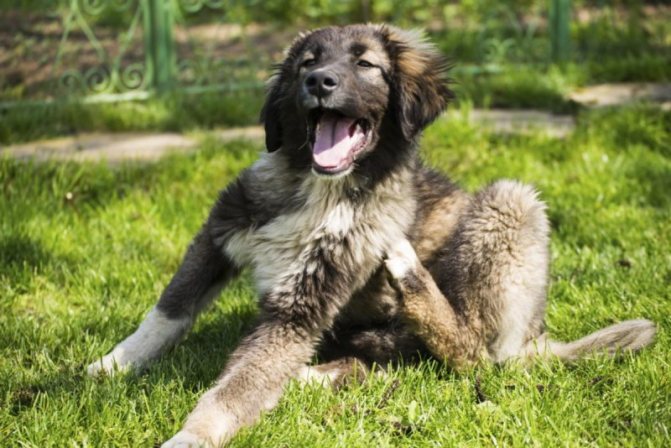

Further, when the skin becomes thinner and scratches appear, they will be inseminated with fungal spores or harmful microbes. If the infection gets into the wound, inflammation will begin, the stimulation of the immune system and how this will end is unknown. If the dog becomes a carrier of a fungal disease, it will lose hair, then, the condition will worsen due to suppression of the immune system.
The problem of diagnosis is that the signs of different diseases appear gradually and do not always "fit" into one picture.
Quite often, itching is ignored until wounds and scabs form on the dog's skin, and even in this case, it is not possible to make a correct diagnosis in a short time. The easiest case to diagnose is a lesion with fleas, if they are not on the pet's skin, this does not mean that the reason is different.
What to do for the owner if itching is detected
Itchy skin in dogs is far from a harmless condition. As soon as the owner of the animal noticed that the pet, in addition, has other symptoms of the disease (ulcers, dandruff, etc.), the dog should be immediately shown to the veterinarian.
After the necessary research, the specialist will determine the exact diagnosis and explain how and how to treat the dog. The exact recommendation depends on the cause of the scabies. It is impossible to hope for an independent cure of the animal, otherwise the disease will take on irreversible consequences.
How to get rid of your dog's itchiness
Treatment options for itching depend on the underlying cause. If the source of the symptom is exposure to ticks, then the veterinarian will prescribe the following drugs:
- ointment Benzyl benzoate (20%, 10%) applied twice a day every 2 days - treats itching caused by scabies mites;
- spray can Spregal - can be given to pregnant bitches, a single use is enough to get rid of the scabies mite;
- for the treatment of ear mites, the ear canals are treated with boric alcohol, then buried Anandin, Tsipam, Dekta, Demos, Barsom, TAP-85 or Dicresil... The course of treatment is from 2 to 4 weeks;
- damage after combing is lubricated with anti-inflammatory ointments with a healing effect (Konkov, Wilkinson, sulfuric, sulfur-tar ointment).
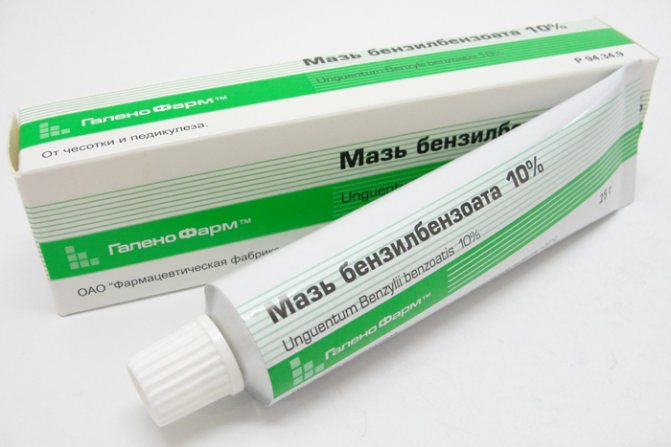

Benzyl benzoate ointment to relieve itching of a dog
For fleas used:
- drops Bars, Frontline, Stronghold;
- collars - Kiltix, Hartz UltraGuard Flea & Tick Collar, SCALIBOR, Beaphar Ungezieferband (suitable for removing ticks);
- shampoos - Phytoelite, Master Bruno;
- pills - Sentinel, Comfortis;
- sprays - Frontline, Blohnet, Hartz, Bolfo;
- apple cider vinegar, lemon water.
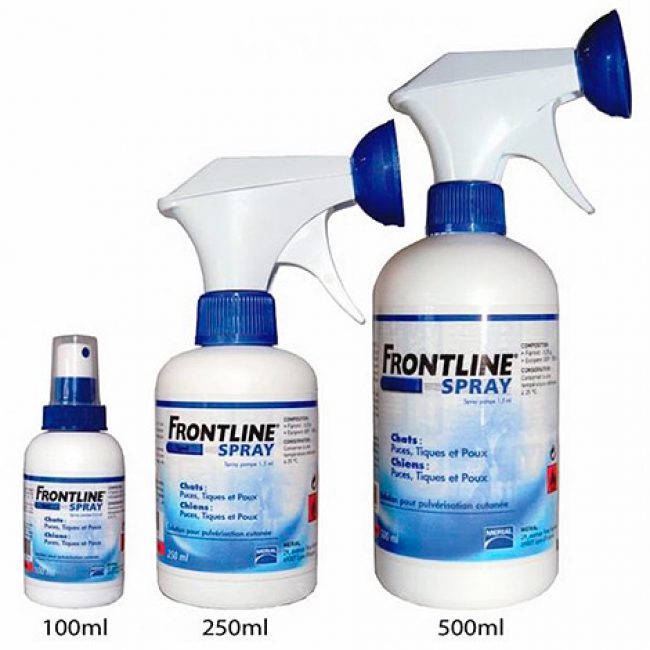

Frontline spray
Allergies in dogs are treated with the following drugs:
- with food allergies, provocateurs are excluded from the diet;
- to remove allergens from the body, they are prescribed Enterosgel, black activated carbon;
- to normalize metabolic processes, they are prescribed Pumpkin;
- an acute form of allergy is treated with antihistamines - Claritin, Suprastin, Tavegil;
- when a secondary infection is attached, antibiotics and antifungal drugs are prescribed.


Tavegil anti-allergy tablets
Important! For food allergies, the dog is fed hypoallergenic food.
What to do about this problem?
If your dog is itchy and starts to lose hair, you need to take action quickly. First of all, it is worth thinking about the possible cause of the disease. Very often it is on the surface and can be solved very easily even at home.
If you cannot solve the problem within a few days, you need to contact a veterinary clinic for examination and consultation with specialists.
How to treat?
If the cause has been precisely established, then you can proceed to treatment. The best treatment is medication. Knowing the disease, you must go to the veterinary pharmacy. There, experts will help you choose the right medicine.
Often, treatment may not be needed. For example, the problem may be a poor diet or a lack of vitamins. In such cases, you need to fix the problem as soon as possible.
Flea search
Any indoor dog can get infected, even one that does not leave the apartment. A person can bring a flea into the house on clothes, shoes, without knowing it. The insect looks for a secluded place, looks for a victim, tries to stay close to it.
On a note!
Fleas on the body of dogs do not live, they jump there when they are hungry. Parasites multiply outside the host's body. If there are not many of them in the apartment, it will not be possible to immediately detect them. Insects are extremely mobile, small in size, hiding in secluded places.
It is necessary to pay attention to the bite marks on the dog's body. Fleas bite painfully, leaving small red spots with caked blood in the center. Constant scratching leads to additional scratches and abrasions. In the absence of proper attention, a secondary infection enters the wounds after flea bites.
It is necessary to inspect the pet's sleeping place, toilet, container with water, food. Flea larvae are small, off-white worms. They feed on waste, skin flakes, excrement, rot.
Even if there is no direct evidence that fleas have appeared in dogs, you need to wash the rug at a high temperature, wash the floors in the house with water with the addition of vinegar, ammonia. Near the bed, drop a few drops of an essential oil of your choice - rosemary, lavender, mint, citrus fruits, wormwood.
Allergy
If there are no fleas, and the pet continues to itch, then allergies may be the reason. This diagnosis belongs to the most serious causes of itching, since it is very difficult to determine what exactly caused such a reaction of the body. Indeed, there are a large number of different allergens in the environment and not every veterinary clinic has the ability to carry out tests that identify an allergen.


Allergy
The following types of allergies can be distinguished:
- parasitic - caused by bites of fleas, ticks and other parasites;
- atopic (non-food) - triggered by chemical elements from the environment, such as clothing, bowl, bedding, dust, pollen, spores, bird fluff, shampoo. Even contact with the collar can cause allergies. This is usually the case in puppies due to the fact that their delicate skin is quite sensitive to constant exposure to insecticides. The puppy itches a lot when trying to remove the collar;
- food - occurs on separate components of food (for example, dyes, spices, gluten, lactose, vegetable protein) or a change in feed;
- for medicines (various medicines, vaccines).
Typical allergy symptoms:
- itchy skinespecially in the area of the ears, tail, leading to swelling and scratching;
- lacrimation nasal discharge, increased salivation;
- sneezing due to itching in the nasal cavity and discharge from it;
- other reactions - swelling eyes, lips, throat, hair loss, groin redness, changes in body temperature upward or downward
Impact of stress
Dogs are no less susceptible to stress than people, which can arise from many reasons, for example, a change of place of residence, the loss of a loved one.


Stress
Short-term factors (injections, a sharp shout) cause a reaction that is eliminated when the irritating factor disappears.
Finding a pet in stress for a long time can lead to such external manifestations as frequent scratching and licking of the body up to bald patches, hair loss.
Inflammation and blockage of the paraanal glands
Some dog owners never find out that their pets have special glands under their tails that secrete a special secret that has an individual odor. This is a very informative component, with the help of which the dogs scare off their fellows, attract them during sexual rut.


When emptying the intestines, the feces press on the sacs of secretion, and it is excreted in the feces. In addition, this can occur due to a spasm that has arisen against the background of fright, soreness, nervous excitement. In a healthy dog, complete emptying of the glands occurs every time he walks "on the big". But in some cases, this natural process does not happen:
- when the secretory fluid thickens - the glands do not get rid of the accumulated secretion to the end, swelling appears. Most often this is the result of a violation of metabolic processes or the development of any disease;
- if the secret becomes too liquid, this violation occurs due to the fact that the glands begin to function more intensively than necessary, the bag does not have time to empty in time, it fills with liquid and swells;
- change in the consistency of feces - to cleanse the glands from secretion, it is necessary that the feces be moderately dense, but not very hard.
How can the owner understand that the pet's anal glands are disrupted? At the initial stage of the development of pathology, there are no obvious signs, except that the dog may more often than usual pay attention to the area under the tail. When flakes appear in secret, the animal begins to worry about severe itching in the anus and soreness
The dog begins to itch, bite and lick the area around the anus.
When the itching becomes unbearable, the dog begins to crawl his booty on the floor, sidewalk, floor coverings, trying to get rid of the uncomfortable sensations. Under mechanical action, part of the secretory fluid is released, and it remains on the pet's coat and skin. Through the skin, the secret enters the bloodstream, which causes allergies, itching, but already in the area above the tail, and not under it. Also, damaged areas of the tissues of the anus and nearby become inflamed, as pathogenic microorganisms penetrate into them.


